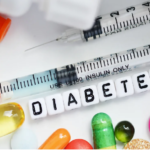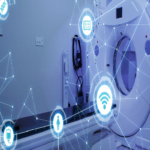The COVID-19 pandemic has fundamentally changed the face of care provision across the world. Telehealth adoption in the US, for instance, has grown around 3,000% since the start of the crisis, taking much of primary care to people’s homes rather than being necessarily tied to a doctor’s office or hospital; A&E attendance in the UK is at its lowest in reported history as patients steer clear of hospitals for fear of contracting the virus; and hospital trusts have been responding with alternative care solutions such as digital triaging services to ensure that patients are still receiving the treatment they need.
In exclusive interviews with Healthcare IT News, representatives of Cambridge University Hospitals (CUH), University Hospital Southampton (UHS) and tech consultants BJSS discussed how the health crisis has pushed forward digital transformation in UK.
TELEHEALTH
One of the key areas of change is in telehealth. The scale of adoption for remote working technologies and agile and flexible services is hitherto unmatched, as the threat of infection has forced health providers to reconsider the way they offer services. Dr Afzal Chaudhry, CCIO at CUH, mentioned how enabling clinicians and operational staff to work offsite was “safer for them whilst continuing to run the hospital effectively.” CUH increased remote working capabilities by 300%, including broadening access to the trust’s EPR system outside of the hospital setting so patients could still receive treatment regardless of their or their clinician’s location.
Similarly a member from the UHS Digital team outlined how they moved to connect 4,500 workers to Microsoft Teams and set up 90 outpatient clinics with their Attend Anywhere software that had only been used by four clinics in their remit prior to the lockdown. This transformation ensured clinicians had access to appropriate hardware and received necessary software training, which contributed to a 400% rise in remote consultations in eight weeks.
There have also been significant inroads made into streamlining care where possible and identifying patients most in need of immediate attention. CUH, for example, refocused their EPR to support patient management, with digital workflows used to organise intensive care ward rounds, expanded analytical tools to track and monitor COVID-19, and non-urgent appointments moved to telephone or video-consultations. UHS also integrated a triaging service to their Patient Service Centre, which allowed them to assess the urgency of a patient’s complaint and denote whether it could be addressed through remote consultations.
FLEXIBILITY
This move to more agile, flexible working has meant care has become more person-focused, both for patients and clinicians. “[Care provision] has been forced to bend around the patient rather than what hours GP offices are open,” said Lauren Bevan, head of health and social care at BJSS, a UK-based consultancy. It has also informed the solutions being brought to market. “People have learned the benefit of working with each other,” Bevan continued. “You can’t implement a digital technology change unless you’re working with clinicians or you’re working with patients. I think this has really brought that to the fore: you have to understand your users to be able to build for them, and that only works when you are shoulder to shoulder.”
Furthermore, patients are also being empowered with control over their care, for instance with expanded access to their own records, both CUH and UHS being examples of which. The UHS Digital team member explained how My Medical Record, UHS’s online patient records platform, set up a clinic for COVID-19 patients who are able to be discharged but still need to be observed, enabling patients’ to monitor their own progression while still being attended to on a virtual ward. They also highlighted the facilitation of virtual visits for hospitalised patients, something that they had struggled to implement pre-crisis. “The reward and the look on people’s faces, it’s so brilliant and obviously really beneficial for their recovery to be able to see their loved ones.”
PREPAREDNESS
Each trust representative spoke of the overwhelmingly positive responses of these transformations, however they also acknowledged the strong digital foundations that facilitated these changes going into the crisis. Chaudhry commented: “As a HIMSS EMRAM Stage 6 trust we are continuing our efforts in advancing digitally from both an electronic patient record, analytical perspective and an IT infrastructure and support perspective, to build on our digital advancements both prior to and during the COVID-19 pandemic.”
The trust’s informatics team also highlighted the importance of already having a digital footprint in UHS’s pandemic response, as the trust was working towards becoming HIMSS Analytics EMRAM Stage 5.
“It’s been used as a real catalyst to get some of the things that people have had on the stocks for even the last five or ten years delivered,” Bevan states, in some circumstances even completely fulfilling providers’ long-term digital adoption plans. However, none of these necessary developments would have been possible without already having the bedrock infrastructure in place to facilitate them. Bevan highlighted the unequal transformations experienced throughout the health service, using care homes as a particular example.
POST CRISIS
Addressing this inequality in digital investment in the health sector is paramount moving forward, and a large part of that is understanding healthcare more holistically. “[Transformation during COVID-19] has been primarily product-focused because people haven’t had the time to think about exactly what it is that they need so they’re going for off the rack solutions,” noted Bevan.
Although necessary for responding to the urgency of the pandemic, this is not a sustainable solution, with digitisation happening unevenly and privileging more established companies.
“A lot of companies have given things for free [during the pandemic] and there’ll be a transition out of that. We have to be careful of that destabilising things by either withdrawing products of a hefty bill being levied,” says Bevan, who also advocated for smaller companies who lacked the resources to get their foot in the door as larger companies rolled-out their services.
Funding is key here. “It’s about financial investment in something,” says the UHS Digital team member. “You need the finance, you need the support, you need the buy-in from the board of governors. Just because it’s been done once, it still needs further investment to further improve.” But throwing money at a problem is not enough: it requires proper assessment of what solutions are needed and adequate and continued training.
Digital transformation is not just about implementing new technology, it is about a long-term psychological change. This means maintaining the momentum around the digitisation of healthcare, something UHS are focusing on in their #KeepTheChange campaign. “It’s always persuading people that there is a digital solution, but they need to invest in it. They may need to invest time in it, they may need to be patient to reach that point but there is a solution,” concluded the UHS Digital team spokesperson.



































